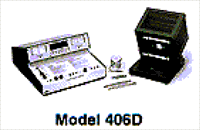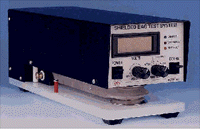
Electrostatic Discharge Testing
Electrostatic
discharge (ESD) is defined as the transfer of static charges between
bodies at different electrical potentials. ESD impacts productivity
and product reliability in virtually every aspect of today's electronics
environment. It can change the electrical characteristics of a
semiconductor device, degrading or destroying it. It can upset
the normal operation of an electronic system, causing equipment
malfunction or failure. In clean rooms, charged surfaces can attract
and hold contaminants, making removal from the environment difficult.
We provide the following ESD tests for electronic parts and packaging
materials:
Surface Resistance Test
Static Decay Test
Triboelectric Charge Accumulation
Capacitive Probe Test
Surface Resistance Test
Meter to use: Model 803B Resistance/Resistivity Probe
For insulative work surface, Point-to-Point resistance (RTT) will
be measured
For conductive work surface, Resistance-to-groundable Point (RTG)
will be measured
Static Decay Test
Meter to use: Charge Plate Monitor (CPM)
Place the specimen on CPM, Charge the specimen to certain voltage
and record the decay time.
Triboelectric Charge Accumulation

This test measures the charge developed on Teflon and Quartz cylinders
when rolled down a test material mounted to a plane inclined at
15o.
Place the specimen on a grounded conductive surface and measure
the charge accumulation.
[
Back to Microcontamination ]



